Fly Fishing with Midges: Best Midge Patterns and How to Fish Them
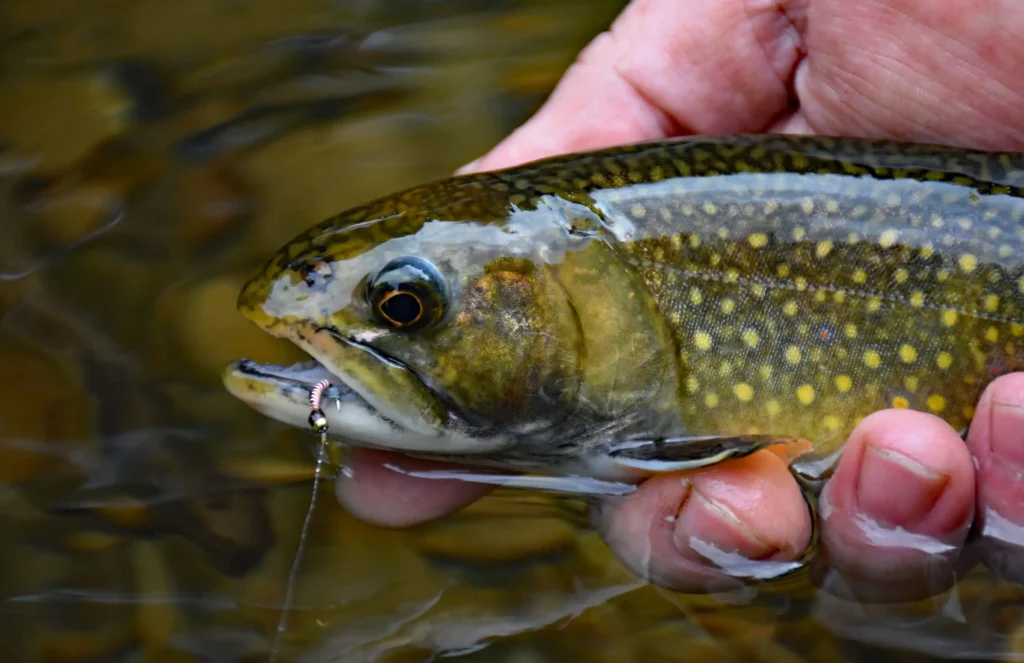
Very few people actually enjoy fly fishing with midges. They’re small, hard to tie on the end of your line, and require some changes in fishing technique to use them successfully. And the problems only get worse as those tiny hook eyes seem to shrink even more as we age, and I often find myself holding the fly and line farther and farther from my face in order to see what the heck I’m doing!
But they work. That’s the thing. Midges are a year-round food source on many streams and rivers across the country, and a primary food source on most tailwaters. If you don’t have a good selection of midges in your fly box and know how to fish them, then you’re leaving a lot of trout left uncaught, and possibly setting yourself up for some very slow days on the water.
Here’s another thing I’ve noticed about midge patterns: they take fish on high pressured waters. There’s no denying that many of our rivers and streams see more fishing pressure than ever nowadays, and overall our techniques for catching fish are very good. A combination of rods, leaders, tippets, and fly design has helped more anglers find success, and with the proliferation of catch and release practices (a very good thing!), the trout in many high-pressured streams are no pushovers. They will often get shy of larger presentations and heavier tippets, which means you have to scale down and lighten up.
But where to start? How to match the select the right midge pattern? And more importantly, how do you catch fish on these microscopic flies? All of these questions and more will be answered in this article.
But proceed with caution! Fishing and tying small flies can be addictive once you start having success with them. Soon you may find yourself wanting to use only patterns you can barely see, and in time you may even come to love them. You have been warned!
What are Midges?
“Midge” is sort of a catch-all term to describe any number of small, winged insect. There are thousands of individual species of midges, but for trout anglers, the family Chironomidae (non-biting midges) seems to be the rockstar of the bunch. Even if you’ve never fished a single famous tailwater, you’ve probably heard of Chironomids or seen a pattern, or used one, that imitates them.
Midges are classified as Diptera, Greek for “two wings,” a family of flies known as True Flies. They have one pair of wings with balancing organs called halteres located immediately behind the base of those wings.
Midges can be biting or non-biting, depending on the species. However, it’s important to note that midges, even the biting no-see-ums, are not mosquitos even though they are sometimes confused as such. Non-biting midges, in fact, are often referred to as “blind mosquitos.”
Most midges, with the exception of Cecidomyiidae (gall midge), are aquatic during the larval stage, which makes imitating them of particular importance to fly anglers. And most species are “highly beneficial and desirable organisms in aquatic habitats. Midges are an important food source for fish, shoreline birds and predatory aquatic insects (diving beetles, ‘waterboatmen’, etc.) and bats. Larvae ‘clean’ the aquatic environment by consuming and recycling organic debris.” (NC Sate Extension Publications)
Midges undergo complete metamorphosis, meaning they have 4 complete life stages: egg, larvae, pupa, and adult. This life cycle can occur in as short a time period as 2-3 weeks during the summer months and 2-7 weeks during fall and winter, depending on water temperature. This combined abundance and frequency makes them a primary food source during all seasons for trout and other species.
Of all midge species, Chironomids should and do receive the most attention from fly anglers all across the country, and a number of patterns have been developed to imitate them, which we’ll discuss down below.
“Chironomid midges are one of the most common and most abundant organisms in natural and man-made aquatic habitats. Larvae are found in small and large natural lakes, sewage oxidation and settling ponds, residential lakes and ponds, and slow moving shallow rivers. Densities of over 4,000 larvae/square feet often occur on the bottoms of nutrient rich bodies of water (sometimes an indication of pollution due to excess nutrients). During adult emergence periods, it is not unusual for several thousand adults per square yard of surface to emerge on a nightly basis.” (NC State Extension Publications)
Chironomid larvae feed on suspended organic matter in the water and in the mud. Once grown, the larvae take on a pink color, eventually turning red due to hemoglobin in their systems, and the mature larvae are commonly called “blood worms.”
How Small are Midges?
Before getting into favorite midge patterns and how to fish them, it’s important to identify what fly sizes constitute as midges. Because that’s really what we’re talking about with midges. These are, by definition, small flies.
Most anglers would agree that we start to enter the “realm of midge” with a size 18 fly pattern and land firmly in that realm with sizes 20 and smaller. However, I know fly fishers who would scoff at calling even a size 20 small. These guys typically fish with flies size 22-32, and yes, they catch plenty of trout on them.
Based on personal experience, I classify a midge as any fly small enough to require a specialized skillset to fish it better, mainly due to the reduced hooking power of the fly pattern being used. In other words, every drop in hook size means a drop in hook gap, which results in decreased potential to hook (and land) fish on these sizes. Generally speaking, I may miss an occasional fish with a size 18 that I would’ve gotten with a size 16, but the difference is negligible until I drop down to a size 20 or smaller fly. And by the time you get to tiny size 28 flies, you’re commonly missing more fish than you hook, and likely losing more fish than you land.
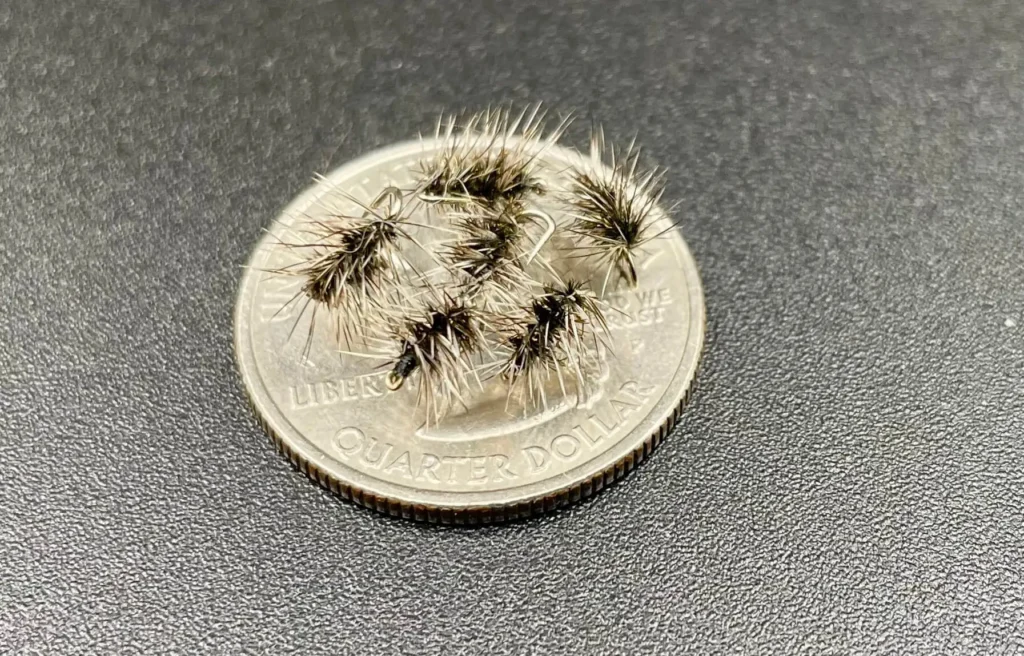
Are You Enjoying This Article?
Stay up to date with the FREE Dark Skies Fly Fishing newsletter delivered three times per month to your inbox. Your information is never sold or shared to any third party and is used solely for the purpose of keeping you updated and informed about the latest news, tricks, tips, stream reports, and new releases from Dark Skies Fly Fishing.
Sign Up NowHow to Catch More Trout with Midges
Fishing with flies size 20 and smaller often requires tactical changes in gear and presentation. So before we get into the actual midge patterns every fly angler should carry, let’s make sure we have the appropriate tackle on hand to fish these flies.
Tippet Selection
It’s important to understand that small flies will almost always fish best with light tippets preferably 18-24 inches in length at the end of the leader. Tippets that are 7x-8x are common, especially on slow-moving tailwaters, spring creeks, and stillwater situations where trout have time to inspect each offering. Occasionally, on faster-moving water and small streams, I can get away with 5x-6x tippets when fishing size 20 dries, but I absolutely receive more refusals from finicky fish than if using something lighter – not because they can see the tippet, but because of the drag the larger tippet incurs.
When fishing tiny flies, even one tippet size can mean the difference between drag and no drag. We all know that drag kills dry fly presentations more than anything, and the potential for drag increases with every drop in fly size if the tippet is not matched accordingly. A size 8 hopper, for instance, has the momentum of a Mack truck going downstream whereas a size 22 midge is more like a two-seat Smart car. Which do you think is more likely to influenced by wind, current, or fly line? The Smart car, of course!
But here’s the kicker: we’re more likely to notice the drag on a size 8 hopper because it’s a big and visible fly. It’s much more difficult to know if we’re getting drag-free drifts with small flies because the flies themselves can be so dang hard to even see. In this case, when I’m fishing very slow moving water, my focus is on the leader and tippet for detecting drag. If my leader and tippet are causing any sort of disturbance, then I know that is being transferred as drag on the fly.
Even when nymphing, lighter tippets will always produce a more natural drift because they provide less resistance in the current. They are also softer and more supple, which allows the fly to move more freely and naturally in the water. The only three times I bump up in tippet size is when I’m fishing heavier flows, larger waters with larger fish, or the water is slightly off color. In these instances, I can often get away with fishing my nymphs on one size larger tippet than normal.
Fly Rods for Fishing Midges
Fishing with lighter tippets means protecting those tippets. For dedicated midging, steer away from the trendy, fast-action rods and opt for medium-action rods. A medium-action fly rod can still handle any nymphing situation, even when using an indicator, but will find its groove when fishing dry flies. It’s forgiving for both casting and setting the hook, and the soft action will protect delicate tippets
Tips for Setting the Hook
Several years ago, a friend advised that my midge fishing skills would get better as I got older and my reflexes slowed down a bit and I wasn’t so quick on the draw. Or you can learn to pause between the strike and the hook set. In that regard, fishing small flies is similar to fishing big flies; you have to give the fish time to eat it before setting the hook.
Remember, these are small flies with correspondingly small hook gaps. In order to get a solid hook set, you have to wait that half-second or so before setting the hook to allow the fly to get deeper into the fish’s mouth. This is also where the medium-action rod comes into play. There’s enough delay between the time you see the strike and set the hook that you’ll naturally hook a higher percentage of fish.
Establish a Strike Zone
As for being able to see a tiny midge dry fly on the water, the best advice I can give is to not necessarily look for the midge but to look for a strike zone. Focusing on a general area is a lot easier on the eyes and will allow you to fish longer and more comfortably without getting fatigued or experiencing eye strain trying to locate the speck of a dry fly.
Watch your fly line unfurl and estimate where your fly should have landed. Next, imagine a small circle as big around as a pie plate (if you’re an accurate caster and know your leader and tippet length) or a small tabletop somewhere at the end of your line. Any time you see a fish rise in that strike zone, set the hook.
Match the Life Cycle
As mentioned, midges undergo complete metamorphois and have 4 complete life stages: eggs, larvae, pupa, and adult. Depending on the conditions and mood of the trout, it’s quite common to find fish keying on specific stages of the insect, much like they often do on specific stages of mayfly hatches. Your fly box should reflect this and include multiple variations of larvae, pupa, and adults.
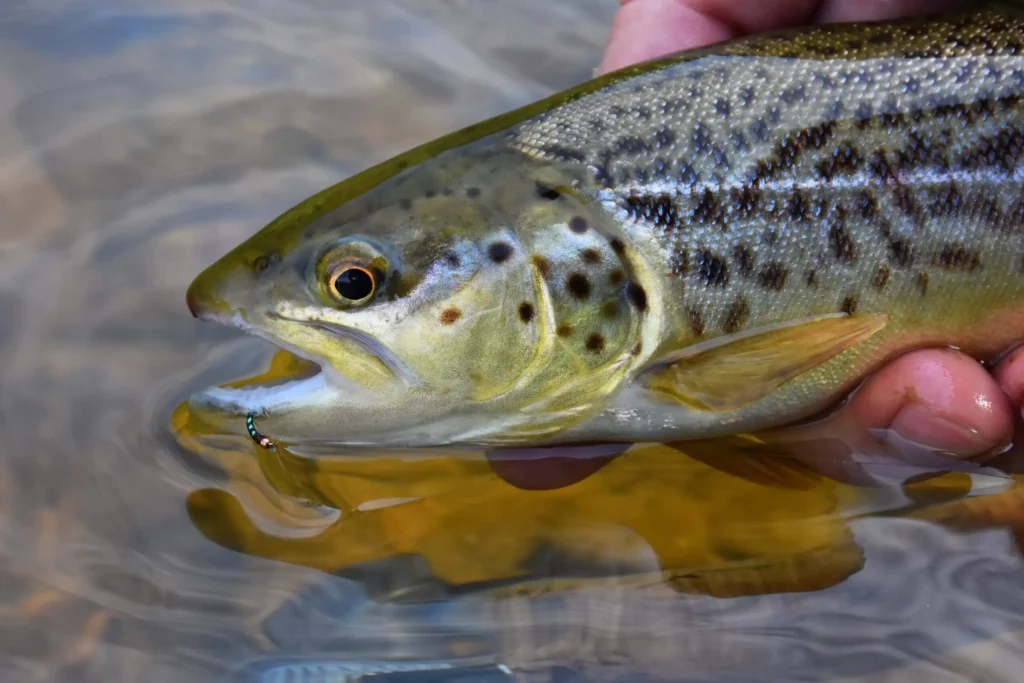
Favorite Rigs for Fishing with Midges
Fishing a Dry Dropper Rig
Midge larvae and pupa make great droppers in a dry dropper rig. They’re small and light, so you can use a much smaller dry fly to carry them than you would if fishing a large, tungsten beaded nymph. Even a size 22 tungsten Zebra Midge, for instance, is still light enough to pair up with a size 14 Elk Hair Caddis in most situations. This is a great advantage for fishing where two things typically occur:
- In low, clear water where fish are ultra spooky of unnatural indicators and you need a more natural fly to serve as an indicator.
- Fish are so spooky that you can’t get close enough to them to Euro nymph or even tightline nymph effectively.
Here’s a video that demonstrates how I like to fish dry dropper rigs.
Tandem Dry Fly Rig
Admittedly, this isn’t my favorite way to fish midges, but I see it recommended quite a bit on other websites and in magazines. This is where you’re fishing two dry flies at the same time, typically with a large, “indicator” dry fly and a midge dry fly dropped off the bend of the hook.
The theory is that the large dry fly will help you locate the trailing midge and detect strikes. This is true. It can certainly work that way. However, two dry flies on the same rig adds twice the drags, and I’d argue that at least half of your casts will be little more than a waste of time. It’s hard enough to get one fly to float drag-free in the current, let alone two.
One time I fished a guide who insisted I use a tandem dry fly rig all day long on our float trip. It was one of the most frustrating days I’ve ever spent on the river. It seemed the two dry flies were playing a constant tug of war with each other all day long, which resulted in countless refusals and missed opportunities.
The only time I’ve seen tandem dry fly rigs work well is when fishing stillwaters where current is not an issue. In this case, you can certainly get away with fishing two dries simultaneously because, once they hit the water, they’re likely just sitting there until you impart action or lift them up off the water to make another cast.
Here’s another article on this website that provides some great suggestions for tandem rigs, including fishing two dry flies at the same time: “Strategies for Fishing Dry-Dropper and Tandem Fly Rigs.”
As a Tag or Dropper in a Tandem Nymph Rig
Midges are ideally suited to use as a dropper or tag fly in a tandem nymph rig. Their small size and light weight make them sometimes difficult to use solo, especially with a Euro nymphing setup, unless you over-bead them and add extra weight, both of which add bulkiness to a pattern that often fishes best when kept sparse.
If I’m fishing a larvae pattern, such as a plain Zebra Midge, under an indicator, I’ll simply drop the midge off the bend of the hook of my top fly. The top fly is typically a larger nymph, egg pattern, or other attractor-type pattern, and even if trout move in and reject it, they’ll usually take the trailing midge. Generally speaking, larvae patterns work best when fished on the bottom.
When fishing a midge in the tag position on a Euro rig, I opt for a pupa version. A Disco Midge or some other pattern with a thorax represent emerging midges and typically fish best up off the bottom.
Favorite Midge Patterns and When to Fish Them
When putting together the ideal fly box for midge fishing, it’s important to keep in mind that midges undergo complete metamorphosis: from larvae to pupa to adult. Therefore, you must have several variations of each stage in order to correctly match whichever one the fish might be keying on at that particular time.
I know what you’re thinking, and yes…even though midges are very tiny, there are minor discrepancies from one stage to another and trout definitely notice! As with any larger mayfly nymph or dun, size and color selection can make a huge difference in failure or success.
Some midge patterns also work better when fished at certain times. For instance, during the early stages of the hatch, or during non-hatch periods, start with a larvae pattern, such as the Zebra Midge or a Chironomid. But as the hatch begins, midges begin rising in the water column as they undergo metamorphosis. Therefore, midge pupa patterns are best fished up off the bottom as the top/tag fly in a tandem rig, for instance.
So consider the midge patterns listed here a starting point. These are the basic patterns that I believe belong in every fly angler’s box, whether they fish waters in the Eastern or Western United States or anywhere in between. The patterns listed below are based on my experiences here in the Great Lakes Region; if I were a Western angler, I’m sure some of these patterns would be different.
Subsurface Larvae and Pupa
The basic rule of thumb for midge larvae and pupa imitations is that they have slightly curved, thin bodies with noticeable segmentation. Most midge larvae are 3-10mm in length, which correlates to a roughly size 16-22 hook shank.
Midge pupa are short and stocky. These are basically matured larvae that are developing into adults, and therefore carry all the extra parts within a swollen thorax: wingpads, legs, etc. At this stage, midges will often move up and down in the water column, using a bubble of trapped gases to propel themselves to the surface where they break free of their shuck. This is a slow process, which makes them vulnerable to trout.
When tying midges (pupa as well as dry fly patterns), the most important factor is to keep the patterns sparse. Midges are small, diminutive insects, and so you’ll notice that each of these patterns requires only 2-3 materials to tie. Too many materials often leads to bulky, ineffective midge patterns. And if a pattern does call more more materials, pay close attention to how much you’re using and keep them as sparse as possible.
Zebra Midge
Like many anglers, my introduction to the effectiveness of small flies came via the Zebra Midge. In some ways, the Zebra Midge has helped popularize the use of small flies because they work everywhere, represent any number of midge species, and are incredibly easy to tie. A basic thread body with a few wraps of silver wire can imitate a midge larvae, or you can add a wrap or two of peacock herl to create a thorax to represent an emerging midge pupa.
I primarily tie and fish with four different colors of Zebra Midges: black, olive, red, and purple. Black is my favorite and most productive color, if for no reason other than it’s the one I use the most year-round. Red is a great color for fall and winter trout. Olive often works best for me summer through early fall. And purple is an attractor color that seems to work best based on conditions (low and clear water) rather than during any specific season.
Although I tie my Zebra Midges as large as size 16, I’ve found size 20 to be the sweet spot for this pattern. But I’ll also tie it as small as size 22. I rarely tie subsurface midge patterns (larvae and pupa) in sizes smaller than 22.
Rainbow Killer
I initially discovered this pattern in a bargain bin at Precision Fly & Tackle a number of years ago. It’s very similar to the Zebra Midge in shape and style, but it incorporates a rib of pearl tinsel over top of a brown thread body. Tie with a gold or copper bead in sizes 18-22.

Jujubee Midge
This flashy little Charlie Craven midge pattern is absolutely awesome. The flash comes courtesy of several strands of fluoro fibre and the two-tone body can be tied with strands of Super Hair (like the original version) or with two different colors of XS Utra Wire, which will also help add weight to the fly, if desired. Tie this one in sizes 18-22 and don’t be afraid to experiment with various color combinations to match the insects that hatch on your local waters, or simply to create a deadly attractor pattern.
Disco Midge
The Disco Midge is a great pupa/emerger pattern that works well in sizes 18-22. In my opinion, any fly with the word “disco” in its name was meant to be tied somewhat flashy, so that’s how I prefer to tie mine. Often, that means a silver tinsel body (kept as thin as possible) and a peacock herl thorax, but the color combinations, as with many other patterns, are seemingly endless. This is also a pattern that I will often add a bead to and will fish Euro-style or under an indicator. In either rig, though, I fish it as the top/tag fly. Midge pupa work best for me when fished higher in the water column. These patterns represent emerging midges, after all, that use trapped gases to propel themselves to the surface.
WD40 Emerger
Just like the product that is its namesake, the WD40 is a versatile emerger pattern that catches trout everywhere. Use it on the surface or underneath as a nymph. I like this pattern best unweighted and as the dropper in a dry-dropper rig. I find it is killer just as a hatch is starting to manifest and trout are starting to look up. Stock this one in sizes 16-22.
Prince Nymph
The Prince Nymph is an “oldie but goodie” that I find myself using more often in sizes 18-20. The beauty of the Prince Nymph is its general attractor qualities; it can represent a mayfly, stonefly, and in very small sizes an emerging midge pupa. I’ve found a size 20 Prince Nymph to work exceptionally well in low, clear streams, too. It possesses great “bugginess” and contrast, two things that often cause trout to eat.
Surface Midges: Dry Flies and Emergers
Figuring out what species of midges feeding are taking on the surface can be incredibly challenging. If possible, find a natural to imitate. Check the slow back eddies and/or fringes of slow-moving pools especially as this is where many spent naturals tend to gather and cluster together. Occasionally I even carry a short-handled mesh net, similar to a fishtank net, to collect samples from the water’s surface. Having an example in hand of what the fish are eating is invaluable for matching the hatch.
Mole Fly
This Charlie Craven pattern is at the top of my list of favorite midge dry fly imitations. The Mole Fly is a dry fly emerger tied with CDC and beaver dubbing body. The CDC puff sits on the water’s surface, making this fly very visible, which your eyes will appreciate. The body hangs below, and it’s incredibly effective for imitating any number of tiny insects. The suspended body gives it a crippled emerger quality that trout love.
When most midges emerge (not counting those that hatch on land, obviously), they tend to sit on their shuck as they dry their wings. They also appear with trailing shucks. Many of these shucks, and the bodies of Baetis, appear brown. But feel free to experiment with different body colors, too. Cream and olive have worked exceptionally well for me.
I tie the Mole Fly in sizes 20 and 22. Here’s an article on this website with more information about the Mole Fly that you might want to check out.
Smokejumper
The Smokejumper is very similar to the Mole Fly but has a slightly bulkier thorax and wingcase. I tie this one in olive, black, and brown colors and in sizes 18-24. Check out this article to learn how to tie and fish with the Smokejumper or watch the video below.
Puff Daddy
For very small, wispy flies down to size 24, a Puff Daddy is a great imitation. Once coated with a desiccant-style floatant, these flies seem to just float on the water’s surface while the lifelike CDC pulsates and seems to tickle the water like tiny legs. This pattern is excellent for imitating midge clusters, too. They float like a cork and are very visible for such a small fly.
RS2 Emerger
I absolutely love RS2 Emergers when trout are feeding on the spinner stage of a midge hatch. Although this one is primarily known as a tailwater pattern, and initially developed by Rim Chung to imitate Baetis emergers, I’ve used it a number of times on limestone streams such as the Little Juniata River, where surface-feeding wild browns can be quite finicky!
But don’t overlook the RS2 Emerger for subsurface fishing, too. I don’t weight this fly or add any type of bead. I prefer the natural look and lightweight of this pattern and often use it as a trailing nymph or tag nymph on a tandem nymph rig where the point fly is weighted. It’s a very subtle option that picks up a number of picky trout both on the surface and below.
Tie this one in olive, black, and gray in sizes 18-26. The size 18 is the size I use most for nymphing and the smaller sizes when fish are feeding on top.
Pat’s Top Secret Midge
Developed by Pat Dorsey, Pat’s Top Secret Midge is a great all-around midge pattern that works well for me everywhere I fish. The two-toned dark brown/white body with wing pad and thorax make it a great emerger-style pattern. But as with the RS2 Emerger, don’t be afraid to fish this as a nymph, too. Tie this one is sizes 20-22.
Griffith’s Gnat
The Griffith’s Gnat is a classic fly that’s excellent for not only when fish are actively feeding on the surface, but as an attractor pattern to evoke a rise. It’s very visible and floats well. During hatches it can represent a midge cluster, which means you can fish this fly in larger sizes (16-20) and still have success. The peacock herl body is a great all-around attractor that matches a number of species of insects, from midges to tiny beetles.
Small Dry Flies
Of course, scaled down versions of almost any traditional Catskill-style dry fly will also take trout that are feeding on midges. Adams, Cream Midges, Black Midges, and Gray Midges all inhabit my fly box in tiny sizes. These work great when trout are keying on the duns and you need a fly that sits high on the water’s surface.
More often than not, though, I find that low-riding, low-profile flies work best when trout are taking midges. Midges are, after all, very small, and often get trapped in the surface film, and many of the patterns on this list fit the bill for taking trout during these situations.
Gear Recommendations
Looking to take your fishing to the next level?
Book a day on the water where we can show you how to read the water, make better presentations, catch more fish, and enjoy time spent outdoors more than ever before.
Book Now!Did You Enjoy This Article?
Stay up to date with the FREE Dark Skies Fly Fishing newsletter delivered three times per month to your inbox. Your information is never sold or shared to any third party and is used solely for the purpose of keeping you updated and informed about the latest news, tricks, tips, stream reports, and new releases from Dark Skies Fly Fishing.
Sign Up Now


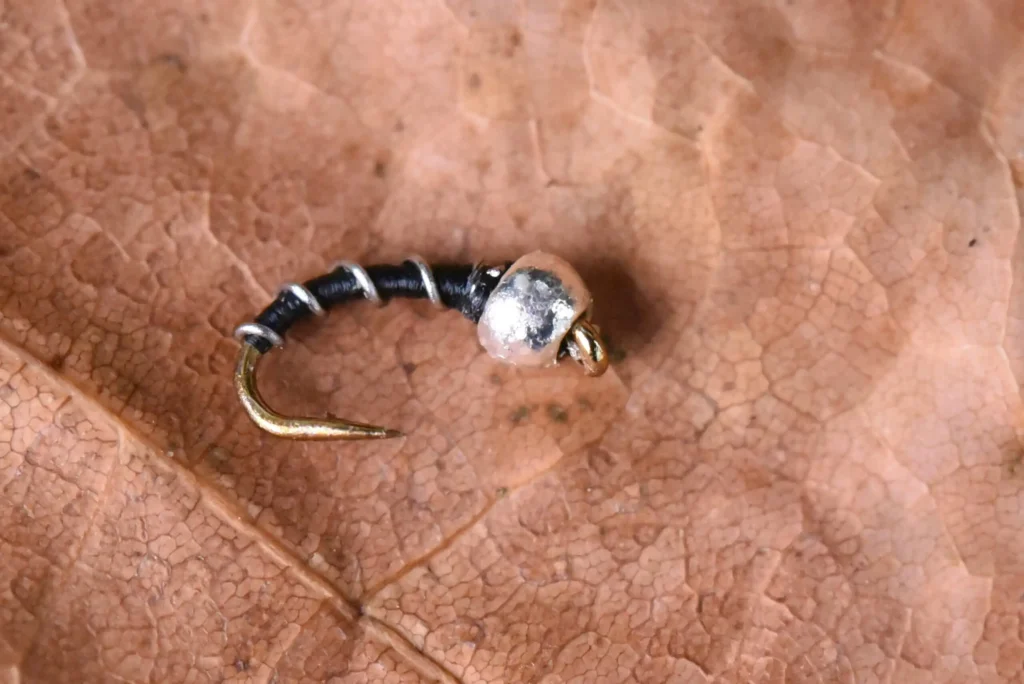






Thank Un4 the article about Midges / it was helpful!
Alan